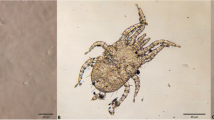Abstract
Nipah virus (NiV) infection is a seasonal disease in Bangladesh that coincides with the date palm sap collection season. Raw date palm sap is a delicacy to drink in Bengali culture. If fruit bats that are infected with NiV gain access to the sap for drinking, they might occasionally contaminate the sap through saliva and urine. In February 2007, we conducted a qualitative study in six villages, interviewing 27 date palm sap collectors (gachhis) within the geographical area where NiV outbreaks have occurred since 2001. Gachhis reported that bats pose a challenge to successful collection of quality sap, because bats drink and defecate into the sap which markedly reduces its value. They know some methods to prevent access by bats and other pests but do not use them consistently, because of lack of time and resources. Further studies to explore the effectiveness of these methods and to motivate gachhis to invest their time and money to use them could reduce the risk of human Nipah infection in Bangladesh.


Similar content being viewed by others
References
Aidoo KE, Nout MJ, Sarkar PK (2006) Occurrence and function of yeasts in Asian indigenous fermented foods. FEMS Yeast Research 6:30–39
Blum LS, Khan R, Nahar N, Breiman RF (2009) In-depth assessment of an outbreak of Nipah encephalitis with person-to-person transmission in Bangladesh: implications for prevention and control strategies. American Journal of Tropical Medicine and Hygiene 80:96–102
Chadha MS, Comer JA, Lowe L, Rota PA, Rollin PE, Bellini WJ, et al. (2006) Nipah virus-associated encephalitis outbreak, Siliguri, India. Emerging Infectious Diseases 12:235–240
Chua KB (2003) Nipah virus outbreak in Malaysia. Journal of Clinical Virology 26:265–275
Daszak P, Plowright RK, Epstein JH, Pulliam J, Rahman SA, Field HE, et al. (2006) The Emergence of Nipah and Hendra Virus: Pathogen Dynamics across a Wildlife-Livestock-Human Continuum, Oxford,UK: Oxford University Press
Dellanno C, Vega Q, Boesenberg D (2009) The antiviral action of common household disinfectant and antiseptics against murine hepatitis virus, a potential surrogate for SARC coronavirus. American Journal of Infection Control 37:649–652
Fitzpatrick R, Boulton M (1994) Qualitative methods for assessing health care. Quality and Safety in Health Care 3:107–113
Fogarty R, Halpin K, Hyatt AD, Mungall BA, Daszak P (2008) Henipavirus susceptibility to environmental variables. Virus Research 132:140–144
Gurley ES, Montgomery JM, Hossain MJ, Bell M, Azad AK, Islam MR, et al. (2007) Person-to-person transmission of Nipah virus in a Bangladeshi community. Emerging Infectious Diseases 13:1031–1037
Hewlett BS, Amola RP (2003) Cultural contexts of Ebola in northern Uganda. Emerging Infectious Diseases 9:1242–1248
Hossain MJ, Gurley ES, Montgomery JM, Bell M, Carroll DS, Hsu VP, et al. (2008) Clinical presentation of Nipah virus infection in Bangladesh. Clinical Infectious Diseases 46:977–984
Hsu VP, Hossain MJ, Parashar UD, Ali MM, Ksiazek TG, Kuzmin I, et al. (2004) Nipah virus encephalitis reemergence, Bangladesh. Emerging Infectious Diseases 10:2082–2087
Kramer A, Galabov AS, Sattar SA, Dohner L, Pivert A, Payan C, et al. (2005) Virucidal activity or a new hand disinfectant with reduced ethanol content: comparison with other alcohol-based formulations. Journal of Hospital Infection 62:98–106
Luby SP, Gurley ES, Hossain MJ (2009) Transmission of human infection with Nipah virus. Clinical Infectious Diseases 49:1743–1748
Luby SP, Rahman M, Hossain MJ, Blum LS, Husain MM, Gurley E, et al. (2006) Foodborne transmission of Nipah virus, Bangladesh. Emerging Infectious Diseases 12:1888–1894
Parashar UD, Sunn LM, Ong F, Mounts AW, Arif MT, Ksiazek TG, et al. (2000) Case-control study of risk factors for human infection with a new zoonotic paramyxovirus, Nipah virus, during a 1998–1999 outbreak of severe encephalitis in Malaysia. Journal of Infectious Diseases 181:1755–1759
Reynes JM, Counor D, Ong S, Faure C, Seng V, Molia S, et al. (2005) Nipah virus in Lyle’s flying foxes, Cambodia. Emerging Infectious Diseases 11:1042–1047
Rock M, Buntain BJ, Hatfield JM, Hallgrimsson B (2009) Animal–human connections, “one health,” and the syndemic approach to prevention. Social Science and Medicine 68:991–995
Rouquet P, Froment JM, Bermejo M, Yaba P, Delicat A, Rollin PE, et al. (2005) Wild animal mortality monitoring and human Ebola outbreaks, Gabon and Republic of Congo, 2001–2003. Emerging Infectious Diseases 11:283–290
Singer MC (2009) Doorways in nature: syndemics, zoonotics, and public health. A commentary on Rock, Buntain, Hatfield & Hallgrimsson. Social Science and Medicine 68:996–999
Wacharapluesadee S, Lumlertdacha B, Boongird K, Wanghongsa S, Chanhome L, Rollin P, et al. (2005) Bat Nipah virus, Thailand. Emerging Infectious Diseases 11:1949–1951
Yob JM, Field H, Rashdi AM, Morrissy C, van der Heide B, Rota P, et al. (2001) Nipah virus infection in bats (order Chiroptera) in peninsular Malaysia. Emerging Infectious Diseases 7:439–441
Acknowledgments
This study was funded by the Centers for Disease Control and Prevention (CDC), CoAg Grant 5-U01-CI000298-03. International Centre for Diarrhoeal Disease Research, Bangladesh (ICDDR,B) acknowledges, with gratitude, the commitment of the CDC to the Centre’s research efforts. We are grateful to our study participants for their time and invaluable information. We thank Main Uddin and Asma Sharmin Muna for their assistance in data collection and transcription of interviews; Rasheda Khan and M. Salah Uddin Khan for contributing to preliminary planning meetings for this study; Dorothy Southern for her guidance in writing manuscripts; and Lara Lise Barker for editing.
Author information
Authors and Affiliations
Corresponding author
Rights and permissions
About this article
Cite this article
Nahar, N., Sultana, R., Gurley, E.S. et al. Date Palm Sap Collection: Exploring Opportunities to Prevent Nipah Transmission. EcoHealth 7, 196–203 (2010). https://doi.org/10.1007/s10393-010-0320-3
Received:
Revised:
Accepted:
Published:
Issue Date:
DOI: https://doi.org/10.1007/s10393-010-0320-3




